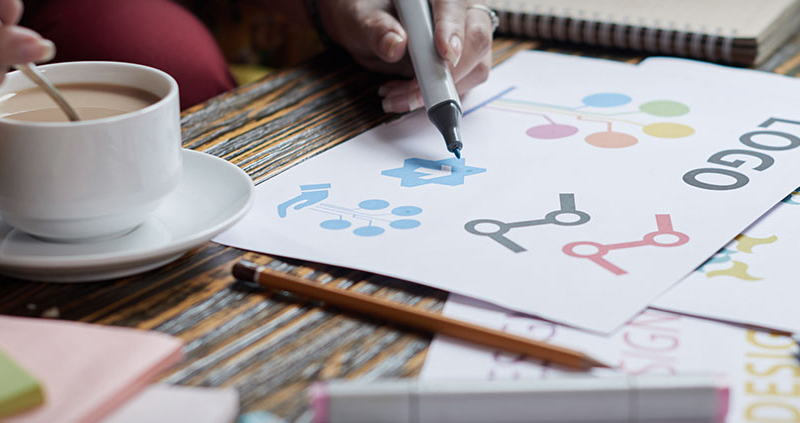5 Reasons Why Your Business Must Have a Logo
Think of all your favorite brands. Now picture their logos. Pretty easy to do. That’s because logos date back to the beginning of marketing time. Consider Nike without the swoosh or Apple without it’s apple. The logo is arguably the most important tool in your advertising toolbox. It’s not some random mark. It gives your company an identity that represents your mission and your core values. If it’s well executed, that identity can instantly convey your brand to potential consumers. Poor logo design can and will repel customers. Not having one at all is an even bigger marketing no no.
Your logo is not your brand.
Before we begin with our 5 reasons for getting a mark, let’s clarify: your logo is not your brand. It represents your brand. Through font, color and mark design, it conveys your company’s personality—much like the clothes you choose to put on in the morning represent who you are. They are not you, but they give others an idea of your personality and character. Developing your logo, then, should take some time and thought. This is a strategic endeavor that will be the anchor to all your future advertising. It should not be taken lightly.
Who are you?
But let’s get back to our 5 reasons. Even if you’re a micro business, you need a company identity. Your target audience should understand who your company is. A good logo is the most expedient way to accomplish that. It can appeal to the consumers you are after and set you apart from competitors. Let’s dive deeper into why.
1. Get recognized: Fame leads to profits.
If you have a business, you have competitors. And if you have competitors, one fundamental task will be getting consumers to think of your company first. A great logo is memorable. It can help to keep your company top of mind.
Think of a service truck that rolls by with the company name simply etched on the side. Will you recall that name? Or will you remember the company with the great logo that made you take a second glance? Coupled with a marketing strategy that puts it in front of consumers across varied media, your logo can help you steal more market share.
2. Build trust: If they like you, they will buy from you.
When it comes to brand identity, logos do a lot of the heavy lifting. You can build trust in the marketplace with a logo that speaks to your target audience in a positive manner. For example, if your ideal customer is a skateboarding millennial, your logo should look quite different than if you’re selling to seniors. Seniors might prefer a more traditional, serif font. Young people tend to gravitate towards more modern sans serif fonts. Sans serif fonts are also friendlier, while serif fonts are great if you want to communicate strength and longevity.
The same goes for the colors you choose. Blues evoke trust. Too much yellow and you might make people anxious. There’s a whole science behind the emotions of color, and you can leverage this information to design a logo that makes consumers feel really good about your company even before they’ve interacted with you.
3. Emotional connection: This is how you build brand fans.
Again, picture all your favorite logos. Think about how they make you feel. The emotional engagement you have with your favorite companies often begins with their logos. Consider these statistics from Marketing and Entrepreneurship:
- 93% of purchasing judgments are made on visual perceptions.
- 7% of consumers say color is the reason they buy a product
- 80% think colors increase brand recognition
This is why you need a logo that is purposely designed to elicit a favorable reaction from consumers. If consumers engage with your logo, they will be more likely to remember your business. And if they remember your business in a good way, they will be more likely to buy from you. In contrast, a poorly designed logo can be detrimental to your bottom line. Your logo is your first impression—and as they say, you don’t get a chance to make another one.
4. Industry marker: Explain what you do.
Through it’s design, your logo can also quickly communicate your industry to consumers. For example, if you are in the pet business, you can easily represent that with visuals. Of course, some business types lend themselves to symbolism more than others, but you can still develop a mark that intimates whether you are a hair salon or a cyber company. This is especially important if your company name does not relate to or convey what your business does.
5. Look professional: Your logo influences perceptions.
If your logo appears to be low quality, consumers might associate that with your products and feel less confident about your ability to deliver professional products or services. This is no different from having a shabby storefront or typos in your advertising. If you show high standards in the way you represent your company, people will assume you apply the same high standards to your offerings and will be more likely to give your business a try.

